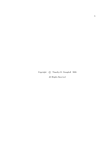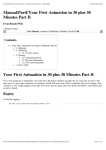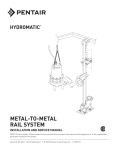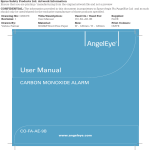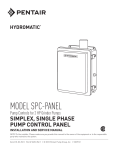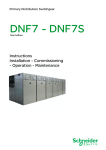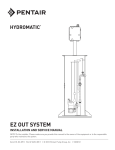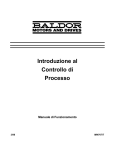Download Kohler TOILETS K-3378-EB User's Manual
Transcript
SIPHON VORTEX LOW PROFILE ONE-PIECE TOILETS INTRODUCTION This service instruction will help you understand the opera tion and repair of Kohler low profile onepiece toilets. The following models are included in these instructions: K-3378-EB PILLOW TALK K-3383-EB PALARRE K-3385-EB ROCHELLE K-3397-EB SAN RAPHAEL K-3402-EB RIALTO K-3408-EB CABERNET THEORY OF OPERATION Consider how a low profile, onepiece toilet differs from the closecoupled toilet. All the water in a close coupled toilet is held in a tank that is above the rim of the bowl. Water to the rim and jet is supplied by gravity. On the other hand, a onepiece toilet holds all the tank water below the rim of the bowl as shown in Fig. #1. Fig. #2 After the flush is completed, the diverter valve directs water to the rim for bowl refill, and to the tank for tank refill. Since water which only will be directed to the jet is stored in the tank, sufficient water to the rim must be supplied by the supply valve as shown in Fig. #3. Fig. #1 When the trip lever is actuated, water enters the supply valve and flows to the diverter valve. At this point all line water is diverted to the rim. The tank water is only used to start the water action in the bowl, and to direct water to the upleg of the trapway to start the siphonic action as illus trated in Fig. #2. 106423-0290 Fig. #3 I.P.S. SUPPLY OF OUTLET I.P.S. SUPPLY K-3378-EB Pillow Talk Fig. #4 K-3397-EB San Raphael Fig. #7 I.P.S. SUPPLY OF OUTLET I.P.S. SUPPLY OF OUTLET K-3402-PB Rialto Fig. #8 K-3383-EB Palarre Fig. #5 OF OUTLET I.P.S. SUPPLY K-3385-EB Rochelle K-3408-EB Cabernet Fig. #9 Fig. #6 -2- ROUGHINGIN AND CONSIDERATIONS INSTALLATION Tank Water Level Screw Timing Screw Kohler low profile, onepiece toilets are perfect for remodel ing and new installations. Refer to the roughingin draw ings Figs. #4 - #9. Slotted screw on newer models Always refer to your local codes and the installation in structions packed with the toilet. KOHLER LOW PROFILE ONEPIECE TOILET FEATURES Seal Screw Onepiece design offers contemporary styling. Elongated bowl offers a large water area for efficient waste removal. Nonoverflow design prevents the bowl from overflowing if the toilet becomes clogged. Rialto, San Raphael, Cabernet, and Pillow Talk toilets flush with 3.5 gallons of water for greater economy. TwistLock flush valves on new Rialto, San Raphael, Cabernet, and Pillow Talk toilets offer ease of replace ment with no tools. Siphon vortex action provides excellent flush and quiet operation. Large water area in bowl aids in effective waste removal. STARTUP AND OPERATION FOR RIALTO, SAN RAPHAEL, CABERNET, AND PILLOW TALK TOILETS For most satisfactory operation of this toilet, 25 to 90 psi working pressure is required at the fixture. A full 1/2" sup ply stop (K-7653) is recommended. A plastic nut is pro vided with the toilet and must be used to make the supply connection to the toilet. 1. Water Level Adjustment: Refer to Fig. #10. Turn on the water supply to the toilet and adjust the water level in the tank to the Water Line mark on flush valve. To raise the water level, turn the tank water level on float valve counterclockwise. To lower the water level, turn the screw clockwise. 2. Bowl Water Level Adjustment: Use the trip chain to lift the flush ball in the tank slightly, to allow water to trickle into the bowl until the water level in the bowl stops ris ing. This is the "seal height" and should be noted for subsequent adjustment. Flush the toilet and observe the water level in the bowl after refill. If the water level is -3- Adjusting the Float Valve Fig. #10 below seal height, turn the seal screw clockwise, reflush the toilet and recheck the water level. Continue adjustment until water stops entering the bowl just as the seal height is reached. If water continues to flow (in bowl) after water level reaches seal height, turn seal screw counterclockwise and reflush toilet. Continue adjustment until water stops entering the bowl just as the seal height is reached. 3. High Water Pressure Timing: Note: If toilet is installed in an area with high water pressure (above 50 psi work ing pressure), the float valve should be timed. To time the float valve hold the float rod and flush the toilet. After the toilet has completed the flush, time the refill from re lease of rod to valve shut-off. For K-3397-EB San Raphael, K-3378-EB Pillow Talk, and K-3408-EB Cabernet. If the time is longer than 34 seconds, no adjustment is required. If time is under 34 seconds, turn timing screw clockwise and recheck timing. Adjust timing screw until time is between 34 and 36 sec onds. After timing the valve, recheck the bowl water level as in step #2, to ensure that seal is maintained. For K-3402-PB Rialto. If the time is longer than 26 sec onds, no adjustment is required. If time is under 26 sec onds, turn timing screw clockwise and recheck timing. Ad just timing screw until time is between 26 and 28 seconds. After timing the valve, recheck the bowl water level as in step #2, to ensure that seal is maintained. HOW TO REPAIR THE RIALTO, SAN RAPHAEL, CABERNET, AND PILLOW TALK FLOAT AND FLUSH VALVE. INTRODUCTION The following instructions are used to replace the plunger assembly on the flush valve for the San Raphael, Rialto, Cabernet, and Pillow Talk toilets. Refer to Fig. #11. Screws Cap Top Cap Float Rod Float Ball O-ring Trip Chain Plunger Ass'y Gasket Flapper Hooks Flush Ball Nut Supply Hardware Rim Diverter Float Gasket Rim Tube Twist Lock Flush Valve Fig. #12 REPLACING THE OLD STYLE FLUSH VALVE (RIALTO AND SAN RAPHAEL ONLY) Float Valve Assembly Fig. #11 1. Refer to Fig. #13. Loosen three screws and turn mounting hooks inward. Remove flush valve. 1. Loosen the screws and remove the cap top and cap. 2. Replace the Oring and plunger assembly. 3. Place the cap and cap top back on valve. Tighten with screws. 2. Assemble gasket to new flush valve. Position new flush valve with three screws and mounting hooks into hole in tank. Make sure mounting hooks are turned inward. Turn mounting hooks outward and tighten screws. NOTE: TOILETS WITH OLD STYLE FLUSH VALVES CAN NOT BE FITTED WITH THE NEW TWISTLOCK VALVE. REPLACING THE TWIST-LOCK FLUSH VALVE 1. Refer to Fig. #12. Turn valve counterclockwise and re move. 2. To install new valve, apply a bead of silicone to the base of the gasket. Insert into hole inside tank. Press down and turn clockwise until valve is in proper position. -4- STARTUP AND OPERATION FOR ROCHELLE & PALARRE TOILETS The trip lever assembly actuates the rotor and flush ball to begin flush. The float valve assembly controls the flow of water through the rotor to the rim holes and tank. The adjusting screw Cap Assembly Adjusting Screw Plunger S.A. Float Rod Float Ball Seat O-ring Rubber Gasket Rotor Lift Chain Rim Flush Tube Hush Tube Screw Rotor Arm Lift Wire Trip Chain Plastic Collar Gasket Locknut Flush Ball Flapper Hooks Rubber Seat Gasket Seat Clamp Supply Connection Flush Ball Rochelle/Palarre Tank Fitting Fig. #14 Screws Trip Lever Assembly Mounting Hooks Volume Control Float Rod Rotor Old Style Flush Valve Fig. #13 Rim Flush Tube controls flow at various water pressures. An antisiphon valve prevents backflow. For most satisfactory operation of this toilet, 25 to 80 psi working pressure is required at the fixture. A full 1/2" sup ply stop (K-7653) is recommended. A pressure regula tor is recommend when pressure exceeds 125 psi. The flush valve controls the flow of water from tank to bowl. The flush ball and lift wire control valve operation at the end of the flush. The lift wire provides for the accurate seating of the flush ball. BEFORE YOU BEGIN ADJUSTMENTS: Refer to exploded view illustration (Fig. #14) and Fig. #15. Make sure you understand the following before you refer to the Troubleshooting Chart. -5- Directional Valve Lift Wire Flush Valve Trip Lever Tank Fitting Assembly Fig. #15 WATER LEVEL. The water level must be at the waterline indicated at the back of the tank for proper flushing of bowl. Bend float rod if necessary to obtain the proper water level. The flush valve will not shut off if the water is above the overflow. If any pressure variation occurs in the supply line, adjust the water level when the water pressure is at its highest point. VOLUME CONTROL. If necessary, you can adjust the flow of water with adjusting screw. Decrease the flow by turning the screw downward or increase the flow by turn ing the screw upward. The screw must be locked after adjustment with the locknut. TRIP LEVER ASSEMBLY. When the trip lever arm is at rest, rotor arm should not contact bottom of lift chain. If necessary, bend trip lever arm downward to maintain clearance. ROTOR ASSEMBLY. The rotor arm should rest on the bottom of lift wire loop. 2. Place long end of rim flush tube over rim flush opening on valve. 3. Assemble rubber seat gasket onto seat. 4. Thread rubber gasket onto hush tube. Slide hush tube over supply tube. 5. Set the seat clamp into center of tank outlet hole. 6. Refer to Fig. #15. Place valve into tank, making sure that the rim flush tube is inserted into the rim flush sup ply; supply tube is through open supply hole in bottom of tank; and the clamp screw hole aligns with the open ing in the seat clamp. HOW TO SERVICE THE ROCHELLE AND PALARRE TOILETS 7. With plastic collar on screw insert, thread in seat clamp and tighten. The following instructions are used to replace the valve as sembly of the K-4859-EB Palarre and K-3385-EB Rochelle. 9. Assemble locknut to hush tube. Tighten locknut. Before beginning replacement procedures, turn off water supply. Flush the toilet to drain water from tank. REPLACING THE PLUNGER AND SEAT ASSEMBLY ON EXISTING VALVE. 1. Turn off water supply. Remove cap assembly by un screwing the two cap screws. Remove plunger assem bly and old Oring. 2. From inside the valve, remove old seat with a seat wrench. 8. Attach flush ball to lift wire. 10. Insert float rod into float guide. Insert float ball. NOTE: Adjust float rod to obtain the correct water level. For proper timing, turn the timing screw downward to decrease flow or upward to increase flow. 11. Reconnect flush valve to the water supply. Turn on sup ply. SERVICING THE FRENCH CURVE TOILET SEAT (NEW STYLE, K-4653) 1. Locate and snap open the two hinged lids that cover the bolt holes as shown in Fig. #16. 3. Thread in new seat. Insert new plunger subassembly in order shown in Fig. #14. Assemble new Oring to cap and reassemble valve. Turn on water. REMOVING OLD FLUSH VALVE 1. Turn off water supply. Disconnect float ball from float rod. Hinged Lid Washer Nut 2. Loosen locknut securing supply tube to tank. 3. Remove trip lever chain from trip lever. 4. Loosen screw in valve seat until seat clamp falls off. French Curve Seat Removal Fig. #16 5. Remove flush valve assembly. INSTALLATION OF NEW FLUSH VALVE 2. TO REMOVE SEAT. Unscrew the bolts and catch the nuts from below. Pull seat and bolts away from toilet. Remove the washers from the toilet. 1. Refer to Figs. #14 and #15. Insert lift wire through hole in guide. Insert rotor arm into lift wire. Thread rotor assembly into valve body. 3. TO REATTACH SEAT. Locate and snap open the two hinged lids that cover the bolt holes. Slip bolts through hinge from above. Slide washers onto mounting bolts. -6- 4. Place seat on toilet, centering the seat/cover bolts in bolt holes as shown in Fig. #17. Post Keyhole Slot Bolt Washer Tongue Single Hinge French Curve Seat Removal Fig. #18 Nut French Curve Seat Installation Fig. #17 5. Align the nut on the seat/cover bolt. 6. After nut has been started on bolt, hold the nut in place and drive the bolt from the top with a screwdriver until tight. 7. Snap the hinged lids closed. SERVICING THE FRENCH CURVE TOILET SEAT (OLD STYLE) Mounting Bar Single Hinge 1. Locate the single hinge. Align the post with the keyhole in the seat and cover as shown in Fig. #18. Post 2. TO REMOVE FOR CLEANING. Lift seat and cover. Slide to the left and remove. 3. TO REATTACH SEAT. Hold seat and cover in vertical position. Align tongue of the single hinge with groove in the mounting bar. Slide assembly sideways so tongue enters groove and post enters keyhole at the same time, as shown in Fig. #19. -7- Reattaching the French Curve Seat Fig. #19 SERVICING THE PALARRE TOILET SEAT 1. Insert the seat hinge bolts through the holes in the toilet bowl ledge and secure with two wing nuts as shown in Fig. #20. Seat Hinge Bolts 3. For old style tank lids, install tank lid retainer clips to the tank lid as shown in Fig. #22. Toilet Seat Retainer Clips Wing Nuts Toilet Tank Lid Tank Retainer Clip Assembly (old style) Fig. #22 Assembling the Palarre Seat Fig. #20 4. Refer to Fig. #23. Install the tank lid assembly to the toilet while depressing the tank lid retainer clips. 2. Refer to Fig. #21. Hold the cover at approximately a 45 degree angle and align the keyhole slot in the seat cover with the key in the seat hinge mounting posts. Slide the posts all the way through the mounting holes. The seat should move up and down freely. Tank Lid Keyhole Slot Seat Cover Depress Clips Seat HInge Mounting Posts Toilet Seat Installing the Palarre Tank Cover (old style) Fig. #23 Assembling the Palarre Seat Cover Fig. #21 -8- LUSTRA SEAT REMOVAL PILLOW TALK SEAT REPLACEMENT 1. Refer to Fig. #24. Pry up seat hinge post covers and loosen screws. Remove wing nuts. 1. Refer to Fig. #25. To install Pillow Talk toilet seat, slide hex head bolts through holes in the two hinge blocks. Slide bushings onto bolts. 2. Notice that the bushing and hinge block are serrated. This allows you to adjust the toilet seat to the correct position before tightening. Place toilet seat onto toilet by inserting the hinge block/bushing assemblies through the two holes on the toilet. Once the bushings are inserted into the holes the toilet seat can be ad justed. Adjust hinge block/bushing forward or back ward until seat position is correct. Make sure the seat is placed squarely on the toilet. Seat Hinge Post Covers 3. Thread wing nuts onto hex head bolts from underside of toilet. An indentation on the hinge block will prevent the hex head bolt from turning when the wing nut is tightened. Screw Wing Nut 4. Attach bolt covers as shown. Lustra Seat Removal Fig. #24 2. Remove seat from toilet. ÉÉÉ ÉÉÉ ÉÉÉ ÉÉÉ ÉÉ ÇÇ ÇÇ ËËË ÉÉÉ ËËËË ÉÉ ÇÇ ÇÇ ËËË ÇÇ ÇÇËËËË Pillow Talk Seat Replacement Fig. #25 GENERAL TOILET TROUBLESHOOTING (ALL MODELS) If toilet won't shut off or is leaking, perform the following procedure for initial troubleshooting, then refer to the ap propriate chart on the following pages. 1. Shut off water supply. Note the water line inside the tank. 2. Wait at least an hour and recheck the water level. 3. If the water level is at the top of the toilet's overflow tube or has not dropped, the water level may be too high, or -9- the float valve may not be shutting off. Refer to the ap propriate chart on the following pages. 4. If the water level has dropped below the water line, check for leaks. Sources of leaks may be at the flapper, the base of the flush valve, or within the china water closet. Refer to the appropriate chart on the following pages. 5. Turn on water supply after performing repairs. - 10 - TROUBLESHOOTING GUIDE FOR RIALTO, SAN RAPHAEL, PILLOW TALK AND CABERNET SYMPTOMS Poor flush. PROBABLE CAUSE CORRECTIVE ACTION A. Low tank water level. A. Check water level in tank, ad just per startup instructions. B. Supply stop not fully open. B. Fully open supply stop. C. Adjust per startup instruc tions. D. Increase running water pres sure. C. Low bowl water level. D. Water pressure below 30 psi. Poor rim wash. A. Same as A, B, C, D for poor flush. A. Same as A, B, C, D for poor flush. Toilet does not shut off but water is not flowing into the overflow. A. Defective flush ball. A. Replace flush ball. B. Defective or dirty flush valve gas ket. C. Leaky float valve seat. B. Clean or replace flush valve gasket . Toilet does not shut off and water is flowing into the flush valve overflow. A. High water level in tank. B. Leaky float ball. A. Adjust water level. (See start up instructions.) B. Replace float ball. Bowl seal does not re cover. A. Seal screw needs adjusting. A. Adjust seal screw per startup in structions. C. Replace seat washer. NOTE: May be caused by tem porary reduced water pres sure. Toilet leaves an odor. A. Toilet is dirty. A. Clean rim holes, bowl, and trap way with disinfecting bowl cleaner. B. Crack in bowl allows sewer gas into the room. B. Replace toilet. Toilet overflows. A. Toilet is clogged. A. Use plunger to unclog toilet. Excessive noise. A. High pressure/high flow B. rate. Seal screw not correctly ad justed. A. Partially close supply stop. C. Plunger needs lubrica tion. C. Lubricate plunger with silicone lube. D. Replace plunger. D. Plunger needs replac ing. - 11 - B. Check water seal, readjust per startup instructions. TROUBLESHOOTING GUIDE FOR ROCHELLE AND PALARRE SYMPTOMS Poor flush. Valve does not shut off. PROBABLE CAUSE CORRECTIVE ACTION A. Water pressure is below 25 psi. A. Increase running water pres sure. B. Water level in tank is too low. B. Bend float rod up slightly. C. Volume control is not adjusted properly. C. Increase flow by turning ad justing screw counterclock wise. D. Supply stop is not open. D. Fully open supply stop. E. Full 1/2" supply NOT installed. E. Install full 1/2" supply. F. Rim flush tube is disconected. F. Reconnect rim flush tube. G. Trapway clogged. G. Unclog trapway or clean out rim holes. or rim holes are A. Water pressure is over 125 psi. A. Install pressure regulator. B. Foreign matter has adhered to seat or seat washer. B. Clean seat/seat washer or re place seat following instruc tions with repair kit. C. Worn seat or seat washer. C. Replace as per B. D. Water level in tank is above con cealed overflow in bowl. D. Slightly bend float rod down ward. E. Water leaking past flush ball. E. Replace flush ball. F. Foreign matter on plunger. G. Bore for plunger in cap assembly F. Replace plunger. is corroded or pitted. H. Crack in tank or bowl is allowing leakage. Toilet leaves an odor. Toilet overflows. G. Replace cap. H. Replace toilet. A. Toilet is dirty. A. Clean rim holes, bowl, and trapway with disinfecting bowl cleaner. B. Crack in bowl allows sewer gas into the room. B. Replace toilet. A. Toilet is clogged. A. Use plunger to unclog toilet. - 12 -













